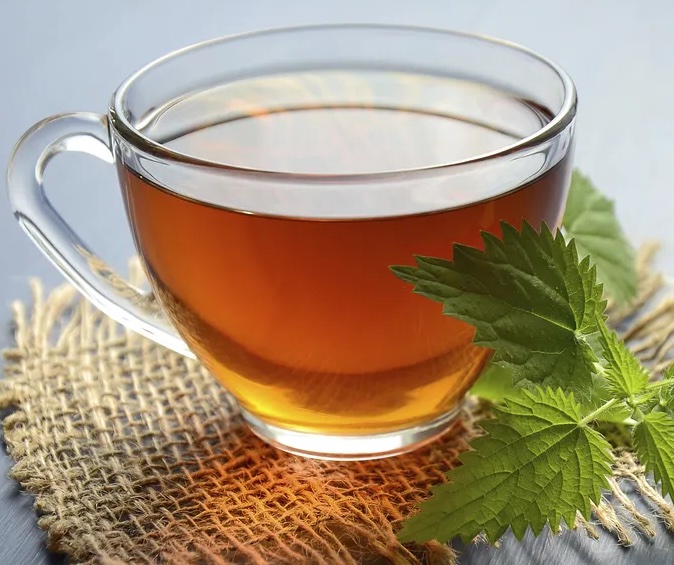chamomile tea benefits

Chamomile is a popular herbal tea made from the dried flowers of the chamomile plant, which belongs to the Asteraceae family. It has been used for centuries for its medicinal properties and there are a great many chamomile tea benefits.
Mostly consumed in tea either on its own or blended with other herbs, Chamomile is a versatile herb that is known for its calming and soothing properties.
Having been used for centuries, Chamomile is a very safe and natural way to promote relaxation and potentially improve a range of health conditions.
However, as with any herbal remedy, it is important to talk to your healthcare provider before using chamomile tea for medicinal purposes, especially if you are pregnant, breastfeeding, or taking medications.
What are some chamomile tea benefits?

Chamomile tea has many benefits:
1. Promotes relaxation and reduces stress: Chamomile tea is known for its calming effects and is often used as a natural remedy for anxiety and stress. It contains a flavonoid called apigenin, which is believed to have a sedative effect on the body.
2. Improves sleep quality: Due to its relaxing properties, chamomile tea may help improve sleep quality and treat insomnia. It can also help reduce nightmares and other sleep disturbances.
3. Reduces inflammation: Chamomile tea contains anti-inflammatory compounds that may help reduce inflammation in the body. This makes it potentially beneficial for conditions such as arthritis, inflammatory bowel disease, and eczema.
4. Boosts immune system: Chamomile tea is rich in antioxidants, which can help boost the immune system to protect the body against harmful bacteria and viruses.
5. Relieves menstrual cramps: Chamomile tea has been shown to help reduce menstrual cramps and other menstrual symptoms, such as bloating and mood swings.
6. Promotes digestive health: Chamomile tea has also been used traditionally to soothe digestive issues such as indigestion, nausea, and diarrhoea. It may also help reduce inflammation in the gut and promote the growth of beneficial gut bacteria.
What if you don't like the taste of chamomile?
I totally get you. I personally don't really like the taste of chamomile "au naturel". However, I love it in the calm and relaxing blends that we keep in the shop.
Here are some nice ones you might like to try:
- Calm Tranquility Blend (my personal favourite)
- Nighty Night Herbal Blend (for sleep)
- Stress Less Herbal Blend
So you can still receive the benefits of chamomile tea without the full flavour profile of chamomile!
Try using Chamomile in hair care or skin care products as well!
CHAMOMILE FOR
HAIR CARE

Other Chamomile tea benefits include using it as a natural hair rinse. Chamomile contains compounds that can help soothe and condition the scalp, as well as add a natural scent, lovely shine and subtle highlights to hair. I remember using Chamomile hair rinses when I was a child. My mum gave me a book on herbs and their uses, and Chamomile hair rinse was one of the first recipes I tried! (I also tried a Rosemary one).
To make a Chamomile hair rinse, steep a small handful of Chamomile flowers in a pot of boiling water for 30 minutes, then strain the liquid and let it cool. After shampooing and conditioning your hair, pour the cooled infusion of Chamomile tea over your hair and scalp, making sure to saturate the hair completely. Leave the rinse on for a few minutes, then rinse it out with cool water.
Using Chamomile in this way can help add shine and brighten blonde or light brown hair, as well as soothe a dry or itchy scalp. However, it is important to do a patch test first to make sure you are not allergic to Chamomile, and to avoid using it if you have dark or colour-treated hair, as it may cause unwanted lightening.
are there chamomile tea benefits in skincare?

Yes! Chamomile can be used in skin care as it has anti-inflammatory and antioxidant properties that can help soothe and protect the skin. Chamomile can be used in various forms of skin care, including as an ingredient in creams, lotions, face masks, toners, and facial steam baths.
Some of the benefits of using Chamomile in skin care include:
1. Soothing skin irritation: Chamomile tea can help calm and soothe irritated skin, making it a useful ingredient for people with sensitive or inflamed skin conditions such as eczema, rosacea, or acne.
2. Reducing redness and swelling: Chamomile tea's anti-inflammatory properties can help reduce redness and swelling in the skin, making it potentially beneficial for people with inflammatory skin conditions such as psoriasis or dermatitis. Add the Chamomile flowers to your bath either directly, or in a small muslin bag to keep the flowers contained but the infusion to steep into the water.
3. Moisturising and hydrating the skin: Chamomile tea can help moisturise and hydrate the skin, helping to reduce dryness and flakiness. Spritz it onto your dehydrated or sunburnt skin.
To use Chamomile in your skin care routine, you can try making a Chamomile tea infusion and using it as a toner or facial mist, adding Chamomile oil or extract to your moisturiser or face mask, or using a Chamomile-based skin care product.
As with any new skin care ingredient, it is important to do a patch test first to make sure you are not allergic to Chamomile.
VERSATILE CHAMOMILE RECIPES
Chamomile is also great in cooking and baking. You can add
it to your cakes, cookies or bread dough or even make a chamomile syrup to
sweeten your pancakes or waffles...
Huh? How? Read on!
chamomile syrup for waffles and pancakes

Making Chamomile Syrup for pancakes is a simple process that requires just a few ingredients. Here's a basic recipe for homemade Chamomile pancake syrup...
Ingredients:
- 1 cup granulated sugar
- 1 cup water
- 1/4 tsp vanilla extract (optional)
- 1/4 cup chamomile flowers
- Pinch of salt
Instructions:
1. Enclose the chamomile flowers into a small muslin bag, or a few paper teabags like our Agatha's Bester ones.
2. In a medium saucepan, combine the sugar, water, and salt. Bring the mixture to a boil over medium-high heat, stirring occasionally to dissolve the sugar. Remove the chamomile because if you leave it in while the syrup reduces, it could burn or turn your syrup bitter.
3. Reduce the heat to medium-low and let the syrup simmer for 10-15 minutes, until it thickens slightly and becomes syrupy. Stir occasionally to prevent the syrup from burning.
4. Remove the syrup from the heat and stir in the vanilla extract (if using).
5. Let the syrup cool for a few minutes before serving. You can store any leftover syrup in an airtight container in the refrigerator for up to 2 weeks.
Variations: You can customise your syrup by adding other flavours or ingredients. For example, you can add cinnamon, nutmeg, or other spices to the syrup while it simmers. You can also add fruit, such as blueberries or strawberries, to the syrup after it has simmered and let it cook for a few minutes until the fruit has softened and released its juices.
Enjoy!
join the conversation!
Comments
Like to make a comment? Be my guest!
SHARE THIS PAGE TO YOUR SOCIAL CHANNELS
Available now
REFLECTIONS IN TEA
A MINDFULNESS
JOURNAL

Reflections in Tea A Mindfulness Journal is an un-dated writing journal with over 147 tea-inspired mindfulness prompts to encourage you to take time to reflect, in the present moment.





